UPSC Daily Current Affairs- 29th November 2023 | Current Affairs & Hindu Analysis: Daily, Weekly & Monthly PDF Download
GS-I
Second phase of Kashi Tamil Sangamam
Subject: Art and Culture
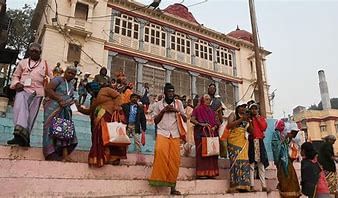
Why in News?
The Centre announced the schedule for second phase of the Kashi Tamil Sangamam from December 17 to 30.
Kashi Tamil Sangamam
- Kashi Tamil Sangamam celebrates the historical and cultural ties between North and South India.
- It is managed by IIT Madras and BHU (Banaras Hindu University).
- Its main goal is to bring together the knowledge and cultural traditions of North and South India, helping people understand our shared history and strengthen connections between these regions.
- The Ministry of Education organizes this event with help from other ministries like Culture, Textiles, Railways, Tourism, Food Processing, Information & Broadcasting, and the Uttar Pradesh Government.
- This effort aligns with the National Education Policy (NEP), 2020, which focuses on combining traditional Indian knowledge with modern knowledge systems.
Cultural Significance
- In the 15th century, King Parakrama Pandya from the Madurai area wanted to build a Lord Shiva temple, so he went to Kashi (Uttar Pradesh) to get a lingam.
- On his way back, he rested under a tree, but the cow carrying the lingam wouldn’t move when he tried to continue his journey.
- Parakrama Pandya took this as a divine sign and set up the lingam there, in what is now known as Sivakasi, Tamil Nadu.
- The Pandyas built the Kasi Viswanathar Temple in present-day Tenkasi, southwestern Tamil Nadu, near the Kerala border, for those who couldn’t travel to Kashi.
Source: Indian Express
Why are the Marathas mobilising now?
Subject: Social Issues
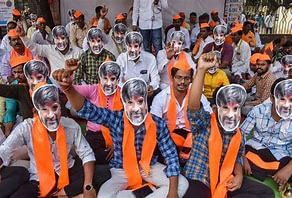
Why in News?
The Maratha community’s demand for reservation in education and employment stems from a crisis of dominance, influenced by urban and rural challenges.
Urban Crisis:
- Well-paid jobs in urban areas, historically held by Marathas, have rapidly disappeared since the late 1990s.
- Large-scale manufacturing industries and establishments providing such jobs have closed or downsized, leading to increased competition for fewer opportunities.
- Marathas, historically socially superior, used their dominant caste position to secure a significant share of jobs, particularly in the public sector.
- Economic liberalization and the shrinkage of public sector jobs have intensified competition among Marathas for limited opportunities.
Rural Crisis:
- Closure of factories has led to the return of workers to villages, disrupting the pattern of workers retiring in villages and their offspring working in cities.
- Rural youth face challenges migrating to urban areas for better-paying jobs, impacting the financial support they traditionally provided to family members in villages.
- Informal sector jobs become the primary option for rural Maratha youth, diminishing their social standing and pride in rural settings.
- The focus on secure public sector jobs, which have also decreased, becomes crucial for rural Maratha youth.
Education Challenges:
- Increased aspirations for higher education among Marathas face a decline in government institutions and a rise in private unaided colleges with exorbitant fees.
- Marathas, with limited financial resources, compete for a limited number of open-category seats in public institutions.
- Decrease in government-run educational institutions exacerbates the challenges faced by Maratha aspirants.
Crisis of Dominance:
- The combination of urban and rural crises contributes to a crisis of dominance for the Marathas.
- Disturbance of caste hierarchy norms due to Dalit mobility and OBC economic and political assertion adds to Marathas’ anxiety.
- The demand for reservation reflects the need for increased formal sector jobs and the expansion of public educational institutions to address the crisis.
Key Highlights:
- Maratha community demands reservation in education and public employment, intensifying since 2016.
- Historically, Marathas dominated well-paid jobs, but recent urban and rural crises have led to increased competition and challenges.
- Closure of manufacturing industries, decreasing public sector jobs, and rural youth’s struggles contribute to the crisis.
- Educational aspirations face challenges with a decline in government institutions and increased private college fees.
Key Challenges:
- Disappearance of well-paid urban jobs, increased competition, and shrinking public sector employment.
- Rural crisis disrupts the traditional pattern of workers retiring in villages and offspring working in cities.
- Decline in government-run educational institutions, limited open-category seats, and rising private college fees.
Key Terms and Phrases:
- Urban crisis, rural crisis, crisis of dominance, economic liberalization, formal sector jobs.
- Reservation, Maratha mobilization, well-paid jobs, private unaided colleges, public sector employment.
Key Examples and References:
- Maratha protests since 2016, closure of manufacturing industries, decreased public sector jobs.
- Disturbance in traditional caste hierarchies due to Dalit mobility and OBC economic and political assertion.
Key Facts and Data:
- Marathas historically occupied over 29% of open-category jobs in government.
- Jobs in the private formal sector increased from 2% to 3.5%.
- Contractual government jobs increased from 0.7 million to 15.9 million in 2017-18.
- Only 22.2% of colleges are managed by the government as of 2019.
Critical Analysis:
- Maratha crisis stems from economic shifts, urban-rural dynamics, and disturbance in caste hierarchies.
- Limited opportunities, competition, and declining public sector jobs contribute to the community’s mobilization.
- Educational challenges add to the complexity, demanding a comprehensive solution.
Way Forward:
- Address urban and rural crises by creating more formal sector jobs.
- Expand public educational institutions and implement large-scale scholarship programs.
- Focus on inclusive policies to reduce competition and restore traditional patterns of employment.
Conclusion:
- The Maratha mobilization for reservation is rooted in the challenges posed by the disappearance of well-paid jobs, urban-rural dynamics, and the disruption of traditional caste hierarchies. Addressing these challenges requires a focus on creating more opportunities in the formal sector and expanding accessible public education.
Source: The Hindu
GS-II
Indian Ocean Tuna Commission
Subject: International Relations
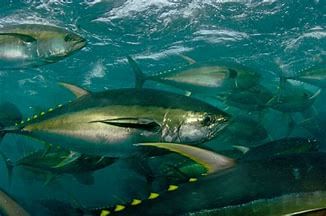
Why in News?
The Department of Fisheries, Ministry of Fisheries, Animal Husbandry & Dairying, is organizing the 19th Working Party on Data Collection and Statistics (WPDCS19) of the Indian Ocean Tuna Commission (IOTC) from 28th November to 2nd December 2023.
About the Indian Ocean Tuna Commission:
- It is an intergovernmental organisation mandated to sustainably manage highly migratory (tuna and tuna-like) fisheries resources in the Indian Ocean.
- The Agreement for the Establishment of the Indian Ocean Tuna Commission was adopted by the Food and Agriculture Organisation of the United Nations at the 105th Session in Rome on 25 November 1993.
- The objective of the IOTC is to promote cooperation amongst contracting members to ensure, through appropriate management, the sustainable use of fishery resources.
- The Indian Ocean is the second-largest tuna fishery in the world.
- The IOTC currently has 31 contracting parties who are members of the IOTC and two cooperating non-contracting parties, Liberia and Senegal.
- Membership of the IOTC is open to:
- Indian Ocean coastal countries
- countries, or regional economic integration organisations, that are members of the UN
- countries that are members of UN special organisations
- countries that fish for tuna in the Indian Ocean
- India is a member of this organisation.
- Headquarters: Victoria, Seychelles
Source: PIB
The challenge of maritime security in the Global South
Subject: International Relations
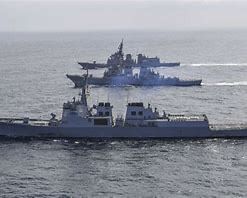
Why in News?
The article underscores the evolving challenges in the maritime domain, emphasizing the shift from traditional military approaches to a developmental model for maritime security. It highlights the need for collaboration among developing nations to address unconventional threats, such as illegal fishing and climate change, while acknowledging the reluctance to prioritize collective action over political and strategic autonomy.
Key Highlights:
- Evolution of Maritime Challenges: New dimensions in hard security challenges, including asymmetrical tactics and grey-zone warfare. Use of land attack missiles and combat drones reshaping the security landscape.
- Shift in Demand for Maritime Security: Growing demand from states facing unconventional threats such as illegal fishing, natural disasters, and climate change. Need for a broader approach beyond military means to address diverse maritime challenges.
- India’s Developmental Approach: Maritime Vision 2030 focuses on economic growth and livelihood generation through port, shipping, and inland waterway development. Indo-Pacific Oceans Initiative with seven pillars, including maritime ecology, marine resources, and disaster risk reduction.
New Threats in Maritime Domain:
- Recent developments include Ukraine’s asymmetrical tactics and China’s maritime militias, indicating a shift to improvised strategies.
- Emerging threats involve grey-zone warfare, land attack missiles, and combat drones.
Demand for Maritime Security:
- Majority of recent demand stems from unconventional threats like illegal fishing, natural disasters, and climate change.
- Addressing these challenges requires commitment of capital, resources, and specialized personnel.
Global South’s Perspective:
- Developing nations perceive Indo-Pacific competition among powerful nations as detrimental to their interests.
- Challenges involve interconnected objectives in national, environmental, economic, and human security.
Challenges in Global South:
- Rising sea levels, marine pollution, climate change disproportionately impact less developed states, leading to vulnerability.
- Unequal law-enforcement capabilities and lack of security coordination hinder joint efforts against maritime threats.
Creative Models for Maritime Security:
- Maritime security transcends military actions, focusing on generating prosperity and meeting societal aspirations.
- India’s Maritime Vision 2030 emphasizes port, shipping, and inland waterway development for economic growth.
- Dhaka’s Indo-Pacific document and Africa’s Blue Economy concept align with a developmental approach.
Fight Against Illegal Fishing:
- Significant challenge in Asia and Africa marked by a surge in illegal, unreported, and unregulated fishing.
- Faulty policies encouraging destructive methods like bottom trawling and seine fishing contribute to the problem.
India’s Indo-Pacific Oceans Initiative:
- Encompasses seven pillars, including maritime ecology, marine resources, capacity building, and disaster risk reduction.
- Advocates collective solutions for shared problems, garnering support from major Indo-Pacific states.
Challenges in Achieving Consensus:
- Implementation of collaborative strategy faces hurdles in improving interoperability, intelligence sharing, and establishing a regional rules-based order.
- Balancing sovereignty and strategic independence remains a priority for many nations, hindering consensus.
Key Challenges:
- Complexity of Unconventional Threats: Conventional military approaches insufficient; requires capital, resources, and specialist personnel. Challenges include illegal fishing, marine pollution, human trafficking, and climate change.
- Global South’s Coordination Challenges: Unequal law-enforcement capabilities and lack of security coordination among littoral states. Reluctance to prioritize collective action due to varying security priorities and autonomy concerns.
- Vulnerability of Less Developed States: Disproportionate impact of rising sea levels, marine pollution, and climate change on less developed states. Vulnerability stemming from inadequate resources to combat environmental and security challenges.
- Lack of Consensus and Reluctance: Reluctance among littoral states to pursue concrete solutions and collaborate. Paradox of non-traditional maritime security, where collective issues clash with political and strategic autonomy.
Key Terms and Phrases:
- Grey-Zone Warfare: Tactics that fall between peace and war, creating ambiguity in conflict situations.
- Asymmetrical Tactics: Strategies that exploit an opponent’s weaknesses rather than confronting strengths directly.
- Maritime Vision 2030: India’s 10-year blueprint for economic growth in the maritime sector.
- Blue Economy: Sustainable use of ocean resources for economic development.
- Indo-Pacific Oceans Initiative: India’s initiative with pillars like maritime ecology, marine resources, and disaster risk reduction.
- IUU Fishing: Illegal, unreported, and unregulated fishing.
- Bottom Trawling and Seine Fishing: Destructive fishing methods contributing to illegal fishing.
Key Examples and References:
- Ukraine’s Asymmetrical Tactics: Utilization of unconventional strategies in the Black Sea.
- China’s Maritime Militias: Deployment in the South China Sea as an example of evolving threats.
- India’s Maritime Vision 2030: Illustrates a developmental approach to maritime security.
- Illegal Fishing in Asia and Africa: Rising challenge with negative environmental and economic impacts.
Key Facts and Data:
- Maritime Vision 2030: India’s 10-year plan for the maritime sector.
- Indo-Pacific Oceans Initiative: Seven-pillar initiative for collective solutions in the maritime domain.
Critical Analysis:
- Shift to Developmental Model: Emphasis on generating prosperity and meeting human aspirations in addition to traditional security measures.
- Comprehensive Maritime Challenges: Recognition of diverse challenges beyond military threats, including environmental and economic goals.
- Littoral State Reluctance: Paradox in the Global South, where collective issues clash with autonomy, hindering collaborative solutions.
Way Forward:
- Collaborative Strategies:Improved interoperability, intelligence sharing, and agreement on regional rules-based order.
- Prioritizing Collective Action: Developing nations must prioritize collective action over sovereignty for effective maritime solutions.
- Sustainable Development Goals: Prioritize sustainable development goals in littoral states, addressing challenges such as illegal fishing and climate change.
Source: The Hindu
GS-III
Black Stork
Subject: Environment and Ecology
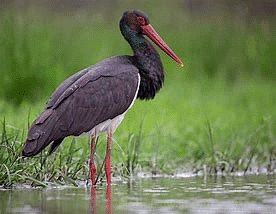
Why in News?
Recently, Black Stork was spotted for the first time in Hastinapur.
Background:-
- A Black Stork, a species rarely seen, has been spotted in the Hastinapur Wildlife Sanctuary in Uttar Pradesh, India.
About Black Stork:-
- Scientific Name: Ciconia nigra.
- FAMILY: Ciconiidae.
- The black stork is a large bird in the stork family Ciconiidae.
- It was first described by Carl Linnaeus in the 10th edition of his Systema Naturae.
- Measuring on average 95 to 100 cm (37 to 39 in) from beak tip to end of tail with a 145-to-155 cm (57-to-61 in) wingspan.
- The adult black stork has mainly black plumage, with white underparts, long red legs and a long pointed red beak.
- It is a widespread but uncommon species.
- It breeds in scattered locations across Europe (predominantly in Portugal and Spain, and central and eastern parts), and east across the Palearctic to the Pacific Ocean.
- It is a long-distance migrant, with European populations wintering in tropical Sub-Saharan Africa, and Asian populations in the Indian subcontinent.
- When migrating between Europe and Africa, it avoids crossing the Mediterranean Sea and detours via the Levant in the east or the Strait of Gibraltar in the west.
- An isolated, non-migratory, population occurs in Southern Africa.
- Conservation status:-
- IUCN: Least concern
Source: Times of India
NISAR (NASA-ISRO Synthetic Aperture Radar)
Subject: Science and Technology
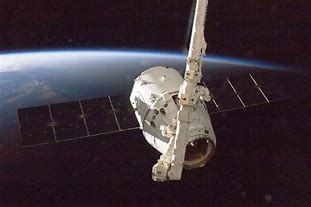
Why in News?
India and the US will launch the joint microwave remote sensing satellite for Earth observation named NISAR (NASA-ISRO Synthetic Aperture Radar) soon.
Background:-
- The Department of Space in a statement said that NISAR is targeted for launch onboard India’s Geosynchronous Satellite Launch Vehicle (GSLV).
About NISAR (NASA-ISRO Synthetic Aperture Radar):-
- Launch year :2024.
- Agency: NASA and ISRO.
- The NASA-ISRO SAR (NISAR) Mission will measure Earth’s changing ecosystems, dynamic surfaces, and ice masses providing information about biomass, natural hazards, sea level rise, and groundwater.
- It will support a host of other applications.
- NISAR will observe Earth’s land and ice-covered surfaces globally with 12-day regularity on ascending and descending passes, sampling Earth on average every 6 days for a baseline 3-year mission.
- The National Aeronautics and Space Administration will provide one of the radars for the satellite, a high-rate communication subsystem for science data, GPS receivers and a payload data subsystem.
- NISAR will be equipped with the largest reflector antenna ever launched by NASA.
- The Indian Space and Research Organisation (ISRO) will provide the spacecraft bus, the second type of radar (called the S-band radar), the launch vehicle and associated launch services.
Objectives:-
- Tracking subtle changes in the Earth’s surface,
- Spotting warning signs of imminent volcanic eruptions,
- Helping to monitor groundwater supplies, and
- Tracking the rate at which ice sheets are melting.
Significance:-
- NISAR’s data can help people worldwide better manage natural resources and hazards, as well as provide information for scientists to better understand the effects and pace of climate change.
Source: AIR
INS Imphal
Subject: Defence

Why in News?
The crest of Yard 12706 (Imphal), the third amongst the four Project 15B stealth-guided missile destroyers, was unveiled by Raksha Mantri Shri Rajnath Singh in New Delhi on November 28, 2023.
About INS Imphal:
- It is the third in the Visakhapatnam-class stealth-guided missile destroyers.
- It is among the largest destroyers constructed in India, with an overall length of 164 metres and a displacement of over 7500 tonnes.
- Speed: Over 30 knots (approximately 55 kmph).
- The ship is a potent platform capable of undertaking a variety of tasks and missions, spanning the full spectrum of maritime warfare.
- The ship boasts a high indigenous content of approximately 75%, which includes Medium Range Surface-to-Air missiles, BrahMos surface-to-surface missiles, Indigenous Torpedo Tube Launchers, Anti-Submarine Indigenous Rocket Launchers (Larsen & Toubro, Mumbai) 76mm Super Rapid Gun Mount (BHEL, Haridwar).
- The crest design depicts the Kangla Palace on the left and ‘Kangla-Sa’ on the right.
- The Kangla Palace is an important historical and archaeological site in Manipur and was the traditional seat of the past kingdom.
- With a dragon’s head and lion’s body, the ‘Kangla-Sa’ is a mythical being from Manipur history and is symbolic as the guardian/protector of its people. ‘Kangla-Sa’ is also the state emblem of Manipur.
- It is the first capital warship to be named after a city in the northeast, Imphal, the capital of Manipur.
Source: PIB
|
63 videos|5408 docs|1146 tests
|
FAQs on UPSC Daily Current Affairs- 29th November 2023 - Current Affairs & Hindu Analysis: Daily, Weekly & Monthly
| 1. What is the second phase of Kashi Tamil Sangamam? |  |
| 2. Why are the Marathas mobilizing now? |  |
| 3. What is the Indian Ocean Tuna Commission? |  |
| 4. What are the challenges of maritime security in the Global South? |  |
| 5. What is NISAR (NASA-ISRO Synthetic Aperture Radar)? |  |





















